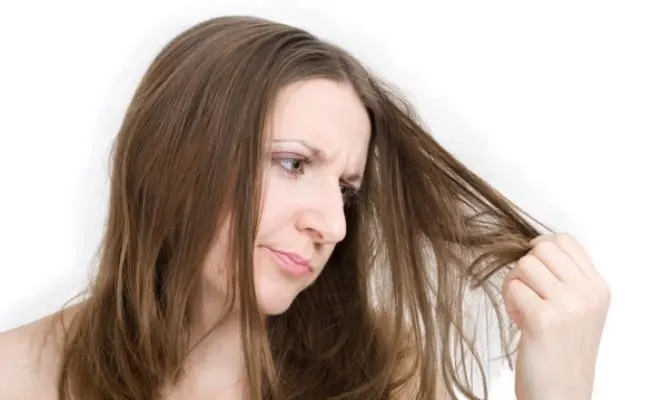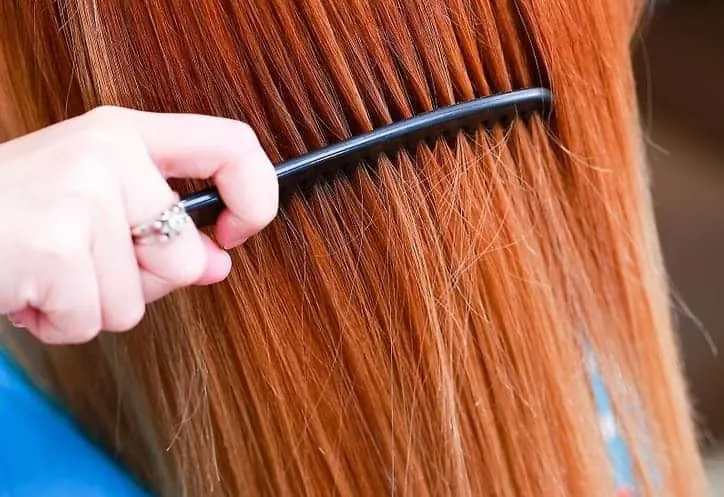Hair with porosity issues feel rough, break easily and have no elasticity, giving it a terrible straw look. That is because the hair pores are permanently open, making it harder for it to absorb nutrients and accept hair dyes. It is also more vulnerable to external agents such as wind, sun, and pollution.
To find out if your hair is porous, just take a simple test. Hold your hair and stretch it. Then run your thumb and index finger over your hair. Check for knots or a sand-like texture. If you find that, the cuticles are open and your hair is porous.
What is Hair Porosity?

Hair porosity is the hair’s capacity to absorb and keep water, nutrients and hair product chemicals. You can evaluate the conditions of your hair cuticles – which are the flexible, external layers of your hair fibers.
When your hair is porous, the fibers may be too close, half-open, or too open. This can bring different issues in each hair type – it can break, be dry, rough, frizzy, etc. That will depend on each hair’s porosity type.
Hair is formed by about 7 to 10 cuticle layers. Together, they act like scales forming a “ring” around your hair, protecting it. That determines how much your hair can absorb the nutrients from hair products, as well as moisture.
Porous hair is generally defined by genetics. On the other hand, it can also be caused by external agents – humidity, pollution, chemical procedures, heat, etc. The causing factor doesn’t matter.
What matters is that the more porous your hair, the more frizz, split ends and excess of volume it will have. Those with dyed hair can also have color fixation or faster-fading issues.
Best Hairstyles for Women With Receding Hairlines
Degrees of Hair Porosity

Your hair can have 3 different porosity degrees – whether its scales are too closed, half-open or extremely open. There’s a treatment for each of those issues. This means hair porosity can be divided into low, medium and high hair porosity.
Low porosity: This means your hair’s scales are too close. In this case, it’s harder for your hair to absorb water or any nutrients and chemicals from hair products.
Medium porosity: This means your hair’s scales are half-open. That makes it easy for your hair to absorb water, nutrients and chemicals. This type of hair can be called normal or healthy.
High porosity: This means the hair’s scales are too open. In this case, your hair can both easily absorb and lose water, nutrients and chemicals.
If you want to know more about the differences, check this article on high vs low hair porosity.
Hair Porosity Test

There’s an easy test you can take at home, to identify your hair’s porosity level according to the aforementioned conditions. To take the hair porosity test, put a clean, dry hair strand inside a glass of clear water.
Leave it for 10 minutes and observe how it reacts:
- If it floats: Your hair has low porosity. The recommended treatment for it is moisturizing.
- If it stays halfway down: Your hair has medium porosity. The recommended treatment for it is nutrition.
- If it sinks: Your hair has high porosity. The recommended treatment for it is reconstruction.
Would you like to know how to moisturize, nourish, or reconstruct your hair?
How to Treat Porous Hair

Once you’ve identified your hair’s porosity level, then you should learn how to take care of it:
Invest in moisturizing creams
Moisturizing is the best trick to make sure your hair isn’t porous. You can use any moisturizing mask you have at home.
Try olive oil
The olive oil from your kitchen can be a great ally as a source of lipids for your hair. Mix it with a moisturizing mask and your hair will be shiny and soft for much longer. You can also use any other type of vegetable oil, such as coconut oil
Liquid Keratin
Liquid Keratin is a great ally against porous hair. You can use it at the reconstruction step, to replenish the hair’s lost mass and eliminate its frizz and dryness. However, don’t use it excessively – it might cause the opposite effect, making the hair dry.
Use Bepanthen
Bepanthen is highly moisturizing and can be used to keep skin and hair soft and shiny. Its properties help seal damaged hair cuticles, keeping them moisturized for much longer.
Have a good hair schedule

As previously said, moisturizing, nutrition and reconstruction of the hair are crucial to avoid and treat its porosity. Invest in a good hair schedule, alternating these three steps. That will keep your hair healthy and beautiful, free of frizz, split ends and dryness.
Avoid high temperatures
Aside from using hair sunscreen when going outside, you should also avoid heat tools such as hair dryers, flat irons and curling irons. Those tools can damage your already dry and fragile hair.
Have a high-quality hair finisher
Due to its damaged internal structure, porous hair tends to be very frizzy. A good hair finisher should soften that frizz.
Apply vegetable butter on the tips
When your hair is porous, the first parts to show damage are the tips. They’ll soon break apart and become what we call split ends. The loss of mass on the hair makes the tips lighter and “floating”.
Vegetable butter can strengthen them so that the hair strands don’t split, preventing and treating their brittleness.
Haircut Numbers & Hair Clipper Sizes
Use apple vinegar
Apple Vinegar can also be used to treat porous hair, since it helps to close the opened hair cuticles, making it soft, shiny and less dry.
